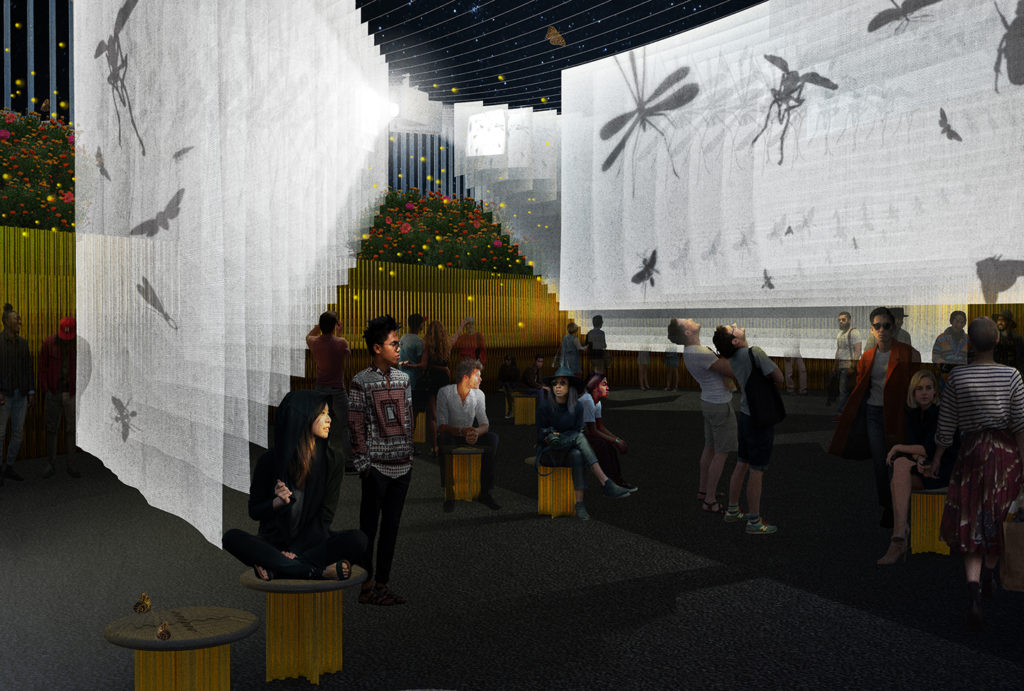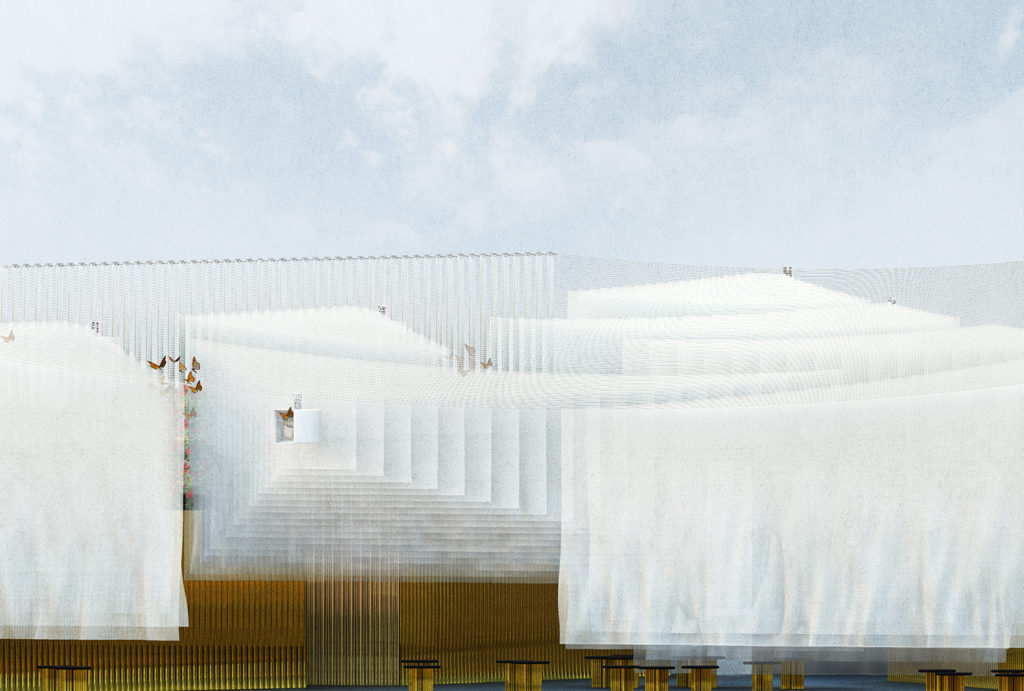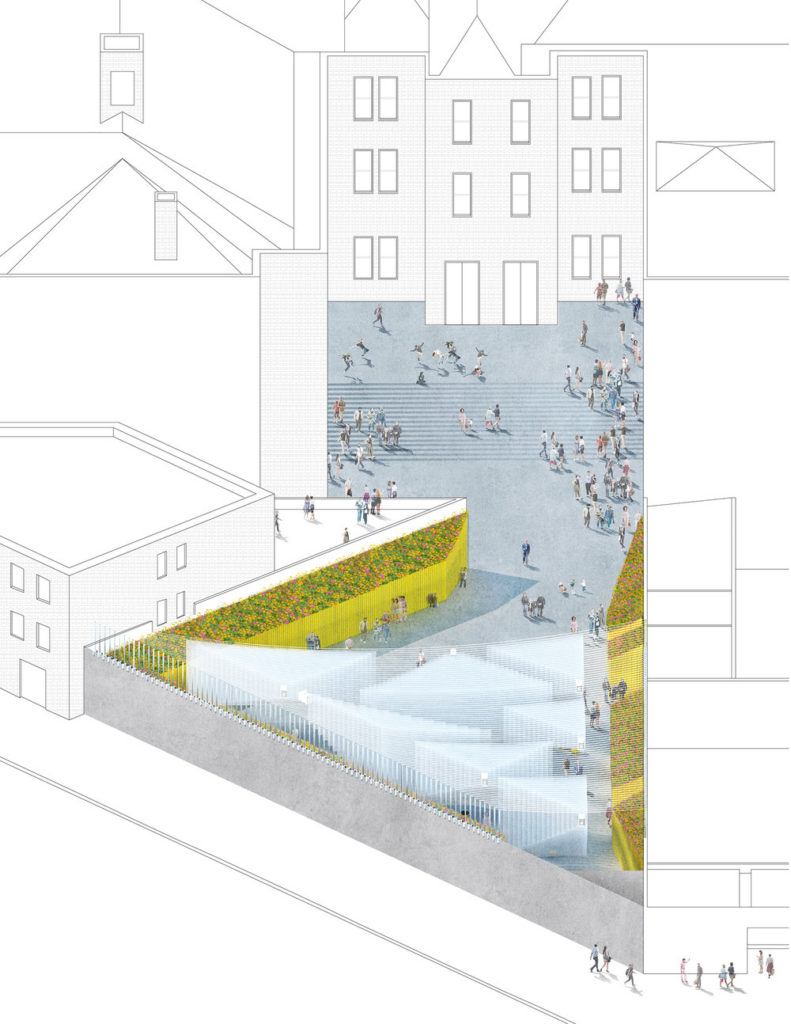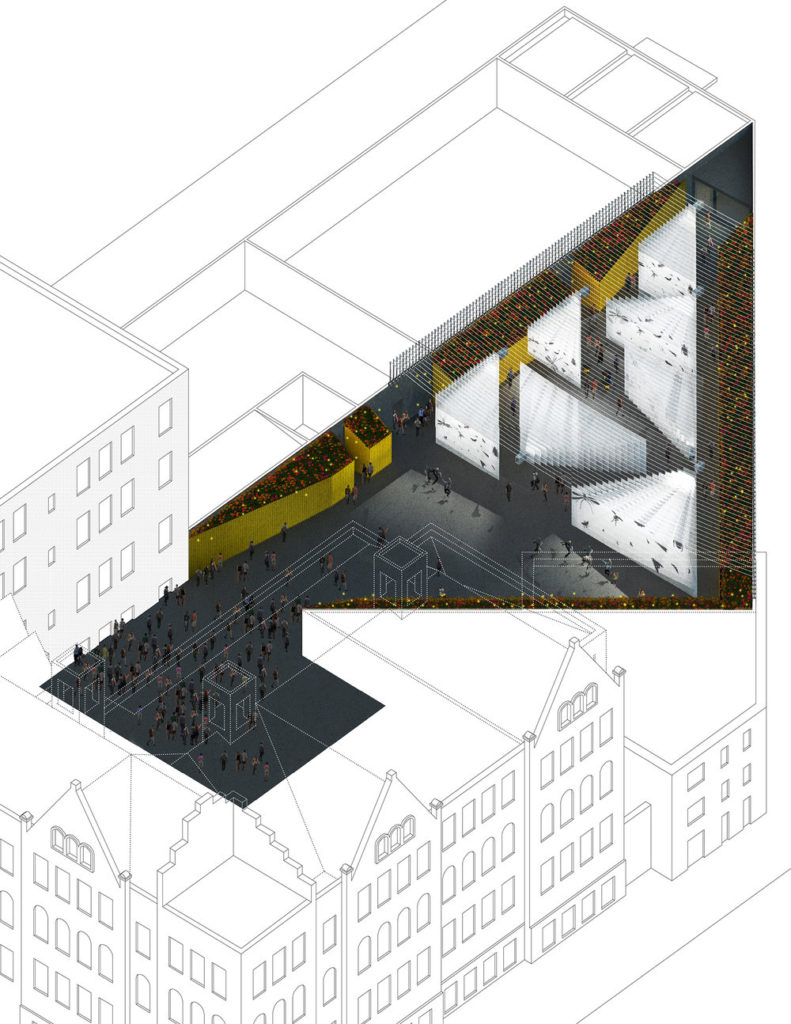2018 : New York, NY, USA. Proposal for MoMA PS1 Competition.
Project developed in partnership with Nerea Feliz/Nerea Feliz Studio as Double Happiness. Project assistants: Hannah Frossard and Bruno Canales (University of Texas at Austin).
The notion of “city life” typically signifies the vitality of human life, but rarely does it evoke the idea of “life” more holistically, as a web of diverse and interdependent species. While we often think of cities as human-territory, the reality is that they are home to a multiplicity of life forms. Among the most plentiful and diverse living populations in cities are insects and arthropods. They constitute over 80% of the world’s species population, but often elude visible recognition. In urban environments, insects are a significant part of the ecosystem. They are pollinators, seed dispersers, decomposers, and serve as a food source for other species such as bats and birds. Various insect species are bioindicators, or “living barometers” of environmental conditions. Recent research shows that in New York City, insects compete with rats as waste scavengers – not only keeping the rodent population from increasing, but also performing ecosystem services as ‘waste managers.’ Our proposal is to make visible the under-acknowledged world of insects as active participants of urban life, by attracting and magnifying their presence in our experienced spaces.
HOVERING SCRIMS: At night, the design uses “positive phototaxis” — or the tendency for insects to be attracted to artificial light sources. We propose to create a series of curtain-like scrims, constructed from mosquito netting fabric, and hung from catenary cables spanning the MoMA PS1 courtyard. Located at the end of each series of layered curtains, an artificial light source will be employed to both attract insects and cast shadows of them on the hanging scrims, which would also filter and reflect the light to produce an ephemeral glow. We imagine that pre-recorded documentation of insects could also be projected through the layers of scrims against one that is playing out in real time. Against the monochromatic backdrop of mosquito netting, the visualization of insects – whether through projected shadows or through video – becomes a form of both spectacle and awareness-raising, an inmersive insect shadow play bringing the space to life. During the day, the hovering curtains provide shadow and transform the courtyard into a softer and interiorized urban condition. At the end of the installation, the mosquito nets could be donated to one of many humanitarian organizations combating malaria.
GOLDEN GARDEN: To cultivate a selected insect habitat, the project incorporates an elevated garden along the perimeter of the main courtyard. Wildflowers would attract a variety of pollinators, including fireflies, ladybugs, bees, butterflies, and hummingbirds. Milkweed, for example, is essential for Monarch Butterflies, as it serves as both breeding grounds for eggs and a food source for Monarch caterpillars. New York City is located along the spectacular 3000-mile migratory route of the Monarchs, which are watchable in late spring and summer. Raised planting beds give heightened visibility to this ecosystem, while also inhibiting direct contact between insects and people, which would drive off certain species such as butterflies. A golden corrugated metal wall is designed as a light plane to conceal a basic structure elevating the planters, an irrigation system, and storage. The golden hue attracts certain insect species and boosts the presence of the garden in the courtyard. The wall undulation dialogues with the natural wave of the scrims. Its golden reflectivity provides a festive backdrop, enlivening the atmosphere in this party venue.



